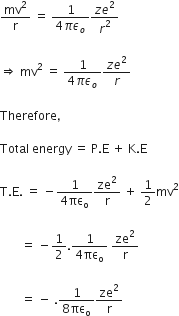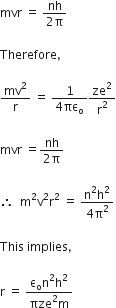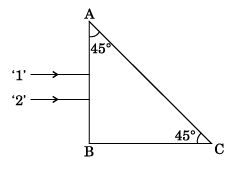 Short Answer Type
Short Answer TypeDefine the term ‘mutual inductance’ between the two coils. Obtain the expression for mutual inductance of a pair of long coaxial solenoids each of length l and radii r1 and r2 (r2 >> r1). Total number of turns in the two solenoids is N1 and N2 respectively.
(a) Why are the connections between the resistors in a meter bridge made of thick copper strips ?
(b) Why is it generally preferred to obtain the balance point in the middle of the meter bridge wire?
(c) Which material is used for the meter bridge wire and why?
OR
A resistance of R draws current from a potentiometer as shown in the figure. The potentiometer has a total resistance Ro
 . A voltage V is supplied to the potentiometer. Derive an expression for the voltage across R when the sliding contact is in the middle of the potentiometer.
. A voltage V is supplied to the potentiometer. Derive an expression for the voltage across R when the sliding contact is in the middle of the potentiometer. 
A voltage V = V0 sin ωt is applied to a series LCR circuit. Derive the expression for the average power dissipated over a cycle.
Under what condition (i) no power is dissipated even though the current flows through the circuit, (ii) maximum power is dissipated in the circuit?Define intensity of radiation on the basis of photon picture of light. Write its S.I. unit.
A biconvex lens made of a transparent material of refractive index 1.25 is immersed in water of refractive index 1.33. Will the lens behave as a converging or a diverging lens? Give reason.
Using Rutherford model of the atom, derive the expression for the total energy of the electron in hydrogen atom. What is the significance of total negative energy possessed by the electron?
OR
Using Bohr’s postulates of the atomic model derive the expression for radius of nth electron orbit. Hence obtain the expression for Bohr’s radius.According to Rutherford’s model, we have
Energy is negative implies that the electron–nucleus is a bound or attractive system.
OR
According to the Bohr’s atomic model, electrons revolve around the nucleus only in those orbits for which the angular momentum is an integral multiple of  .
.
So, as per Bohr’s postulate, we have
This is the required expression for Bohr's radius.
Explain, with the help of a circuit diagram, the working of a p-n junction diode as a half-wave rectifier.
Two monochromatic rays of light are incident normally on the face AB of an isosceles right-angled prism ABC. The refractive indices of the glass prism for the two rays ‘1’ and ‘2’ are respectively 1.35 and 1.45. Trace the path of these rays after entering through the prism. 
Write the functions of the following in communication systems:
(i) Transducer
(ii) Repeater